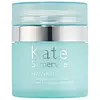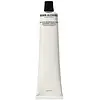What's inside
What's inside
 Key Ingredients
Key Ingredients

 Benefits
Benefits

 Concerns
Concerns

 Ingredients Side-by-side
Ingredients Side-by-side

Water
Skin ConditioningDimethicone
EmollientGlycerin
HumectantPropanediol
SolventDiphenylsiloxy Phenyl Trimethicone
Skin ConditioningGlyceryl Glucoside
HumectantDimethicone/PEG-10/15 Crosspolymer
Spirulina Maxima Extract
SmoothingPalmitoyl Tetrapeptide-7
Skin ConditioningRosmarinus Officinalis Leaf Extract
AntimicrobialCalendula Officinalis Flower Extract
MaskingTocopheryl Acetate
AntioxidantTocopherol
AntioxidantHydrolyzed Hyaluronic Acid
HumectantEthylhexylglycerin
Skin ConditioningPolysilicone-11
Lecithin
EmollientChrysin
Skin ConditioningLauryl PEG-9 Polydimethylsiloxyethyl Dimethicone
Skin ConditioningSodium Chloride
MaskingDisteardimonium Hectorite
StabilisingSucrose
HumectantSodium Citrate
BufferingParfum
Masking1,2-Hexanediol
Skin ConditioningTriethyl Citrate
MaskingDipropylene Glycol
HumectantPentylene Glycol
Skin ConditioningDisodium EDTA
Phenoxyethanol
PreservativeLinalool
PerfumingLimonene
PerfumingWater, Dimethicone, Glycerin, Propanediol, Diphenylsiloxy Phenyl Trimethicone, Glyceryl Glucoside, Dimethicone/PEG-10/15 Crosspolymer, Spirulina Maxima Extract, Palmitoyl Tetrapeptide-7, Rosmarinus Officinalis Leaf Extract, Calendula Officinalis Flower Extract, Tocopheryl Acetate, Tocopherol, Hydrolyzed Hyaluronic Acid, Ethylhexylglycerin, Polysilicone-11, Lecithin, Chrysin, Lauryl PEG-9 Polydimethylsiloxyethyl Dimethicone, Sodium Chloride, Disteardimonium Hectorite, Sucrose, Sodium Citrate, Parfum, 1,2-Hexanediol, Triethyl Citrate, Dipropylene Glycol, Pentylene Glycol, Disodium EDTA, Phenoxyethanol, Linalool, Limonene
Water
Skin ConditioningCetearyl Olivate
Sorbitan Olivate
EmulsifyingCamellia Oleifera Seed Oil
Skin ConditioningVitis Vinifera Seed Oil
EmollientCetyl Alcohol
EmollientGlycerin
HumectantCopernicia Cerifera Wax
Calcium Silicate
AbsorbentTocopherol
AntioxidantLavandula Angustifolia Oil
MaskingBorago Officinalis Seed Oil
EmollientEuterpe Oleracea Fruit Oil
Skin ConditioningSodium Phytate
Benzyl Alcohol
PerfumingDehydroacetic Acid
PreservativeOryza Sativa Bran Oil
EmollientSesamum Indicum Seed Oil
EmollientSolanum Centrale Fruit Extract
Skin ConditioningCarum Petroselinum Seed Oil
MaskingLinalool
PerfumingWater, Cetearyl Olivate, Sorbitan Olivate, Camellia Oleifera Seed Oil, Vitis Vinifera Seed Oil, Cetyl Alcohol, Glycerin, Copernicia Cerifera Wax, Calcium Silicate, Tocopherol, Lavandula Angustifolia Oil, Borago Officinalis Seed Oil, Euterpe Oleracea Fruit Oil, Sodium Phytate, Benzyl Alcohol, Dehydroacetic Acid, Oryza Sativa Bran Oil, Sesamum Indicum Seed Oil, Solanum Centrale Fruit Extract, Carum Petroselinum Seed Oil, Linalool
Ingredients Explained
These ingredients are found in both products.
Ingredients higher up in an ingredient list are typically present in a larger amount.
Glycerin is already naturally found in your skin. It helps moisturize and protect your skin.
A study from 2016 found glycerin to be more effective as a humectant than AHAs and hyaluronic acid.
As a humectant, it helps the skin stay hydrated by pulling moisture to your skin. The low molecular weight of glycerin allows it to pull moisture into the deeper layers of your skin.
Hydrated skin improves your skin barrier; Your skin barrier helps protect against irritants and bacteria.
Glycerin has also been found to have antimicrobial and antiviral properties. Due to these properties, glycerin is often used in wound and burn treatments.
In cosmetics, glycerin is usually derived from plants such as soybean or palm. However, it can also be sourced from animals, such as tallow or animal fat.
This ingredient is organic, colorless, odorless, and non-toxic.
Glycerin is the name for this ingredient in American English. British English uses Glycerol/Glycerine.
Learn more about GlycerinLinalool is a fragrance and helps add scent to products. It's derived from common plants such as cinnamon, mint, citrus, and lavender.
Like Limonene, this ingredient oxidizes when exposed to air. Oxidized linalool can cause allergies and skin sensitivity.
This ingredient has a scent that is floral, spicy tropical, and citrus-like.
Learn more about LinaloolTocopherol (also known as Vitamin E) is a common antioxidant used to help protect the skin from free-radicals and strengthen the skin barrier. It's also fat soluble - this means our skin is great at absorbing it.
Vitamin E also helps keep your natural skin lipids healthy. Your lipid skin barrier naturally consists of lipids, ceramides, and fatty acids. Vitamin E offers extra protection for your skin’s lipid barrier, keeping your skin healthy and nourished.
Another benefit is a bit of UV protection. Vitamin E helps reduce the damage caused by UVB rays. (It should not replace your sunscreen). Combining it with Vitamin C can decrease sunburned cells and hyperpigmentation after UV exposure.
You might have noticed Vitamin E + C often paired together. This is because it is great at stabilizing Vitamin C. Using the two together helps increase the effectiveness of both ingredients.
There are often claims that Vitamin E can reduce/prevent scarring, but these claims haven't been confirmed by scientific research.
Learn more about TocopherolWater. It's the most common cosmetic ingredient of all. You'll usually see it at the top of ingredient lists, meaning that it makes up the largest part of the product.
So why is it so popular? Water most often acts as a solvent - this means that it helps dissolve other ingredients into the formulation.
You'll also recognize water as that liquid we all need to stay alive. If you see this, drink a glass of water. Stay hydrated!
Learn more about Water